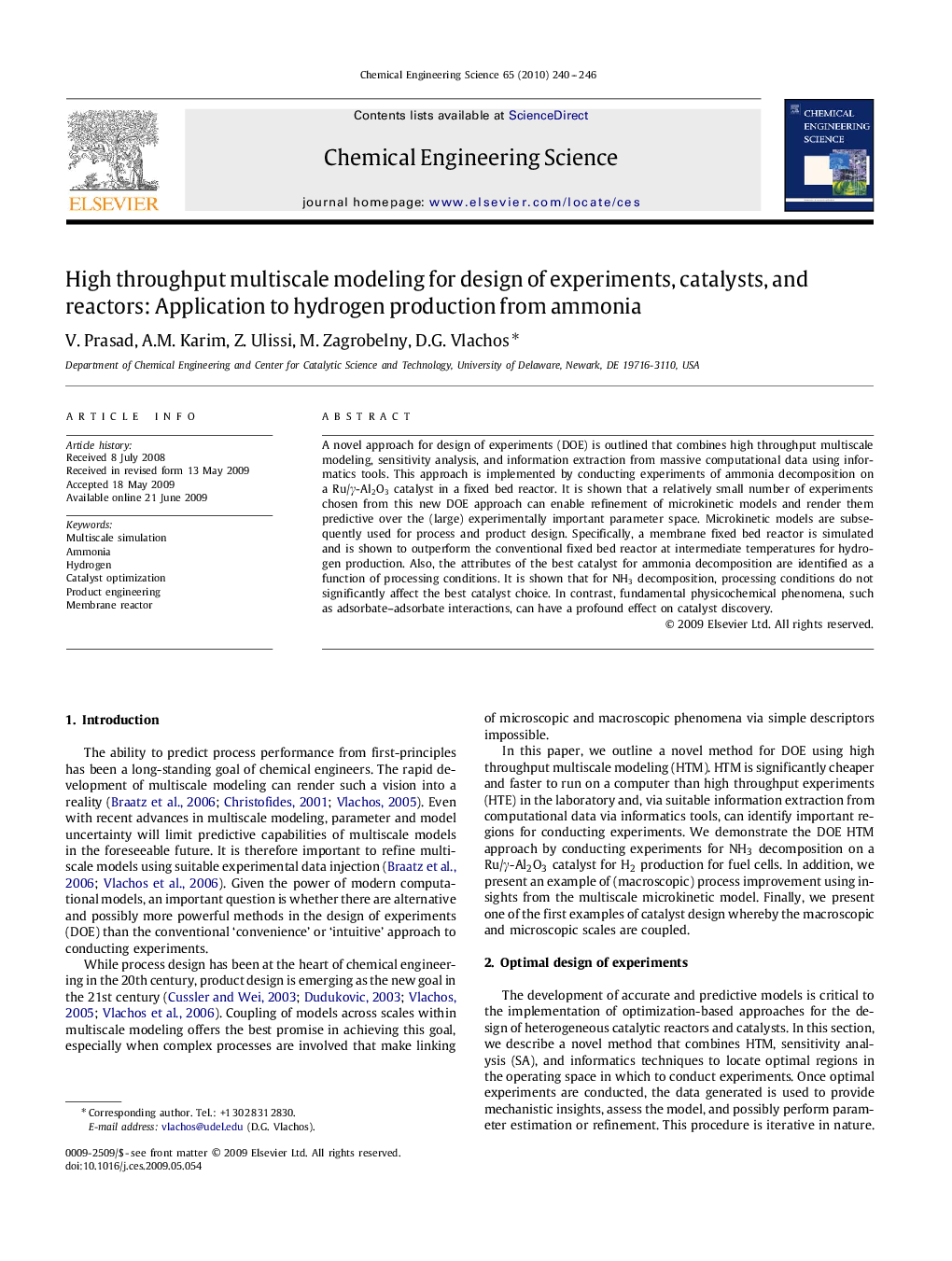| Article ID | Journal | Published Year | Pages | File Type |
|---|---|---|---|---|
| 157696 | Chemical Engineering Science | 2010 | 7 Pages |
A novel approach for design of experiments (DOE) is outlined that combines high throughput multiscale modeling, sensitivity analysis, and information extraction from massive computational data using informatics tools. This approach is implemented by conducting experiments of ammonia decomposition on a Ru/γ-Al2O3 catalyst in a fixed bed reactor. It is shown that a relatively small number of experiments chosen from this new DOE approach can enable refinement of microkinetic models and render them predictive over the (large) experimentally important parameter space. Microkinetic models are subsequently used for process and product design. Specifically, a membrane fixed bed reactor is simulated and is shown to outperform the conventional fixed bed reactor at intermediate temperatures for hydrogen production. Also, the attributes of the best catalyst for ammonia decomposition are identified as a function of processing conditions. It is shown that for NH3 decomposition, processing conditions do not significantly affect the best catalyst choice. In contrast, fundamental physicochemical phenomena, such as adsorbate–adsorbate interactions, can have a profound effect on catalyst discovery.
